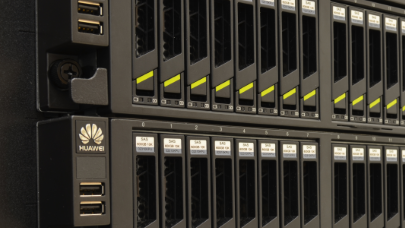Launched on May 5th, the new family of Intel Xeon processors E7 v3 has built-in characteristics targeted towards real-time analysis in a big data context
Engraved in 22nm technology and counting 5.7 billion transistors, the Intel Xeon E7-8800 / 4800 v3 processor family is designed to improve access times to information through their analytical abilities in real time, transforming data into strategic advantages. The economic analysis in real time is a priority for many businesses sectors ranging from health to trade through telecommunications. The need for immediate access to actionable information from large volumes of data is at the heart of the growth of new big data analysis technologies and in-memory computing. Given the current and future demand, revenues from this market are expected to exceed $ 95 billion per year by 2018. 50% of large organizations will then have adopted in-memory processing to design their digital strategies.
A processor designed to accelerate the analysis and decision making
The family of Intel Xeon processors E7 v3 allows customers to process and analyze large amounts of data securely in memory systems for a faster decision making and enhanced operational efficiency to ensure the same business competitiveness. “In the digital services economy, success or failure depends on the speed at which a company can act on the information it has masses of data,” said Diane Bryant, vice president and general manager of Data Center Group, Intel. “The Intel Xeon E7 family v3 is a driving force in accelerating this phenomenon. It provides real-time analysis that helps companies enhance customer satisfaction by offering more customized products and services, and create new revenue streams while improving operational efficiency. ”
According to the manufacturer the highlights of this new generation are :
- The new family of processors provides an average performance improvement of 40% compared to the previous generation.
- Performance is multiplied by six in applications processing in-memory transactional workloads optimized with new Intel Transactional Synchronization Extensions instructions (Intel TSX).
- With up to 18 cores, 20% better compared to the previous generation, and up to 45 MB of last level cache, this processor family offers up to 70% more analysis sessions per hour compared to the previous generation.
- The performance per dollar is up to ten times better, with a total cost of ownership announced 85% lower compared to alternative RISC architectures, thanks to reduced hardware acquisition costs, power supply, and cooling expenditures.
- The maximum configuration accepts up to 32 sockets with the greater memory capacity per socket of the market (up to 12 terabytes of DDR3 or DDR4).
- New security and reliability capabilities are present, including increased cryptographic performance of the new Intel Advanced Encryption Standard New Instructions (AES-NI), as well as other improvements at the micro-architectural level.
The Intel Xeon E7 family v3 includes twelve different models of processors, including many models optimized for various market segments, such as the two high-frequency processors designed for database applications requiring the fastest possible cores. 17 manufacturers worldwide have begun to announce platforms based on the Intel Xeon processor E7 v3: Bull, Cisco, Dell, Fujitsu, Hitachi, HP, Huawei, Inspur, Lenovo, NEC, Oracle, PowerLeader, Quanta, SGI, Sugon, Supermicro and ZTE. And Intel and Cloudera have at the same time announced new details about the impact of their partnership on the adoption of wide analysis process. They relate in particular to the implementation of Intel AES-NI instructions that multiply by 2.5 off-load encryption performance, allowing Hadoop data to be encrypted using only 1% of the processor.
Transforming the enterprise with real-time analysis
NipponPaint, one of the biggest paint producers in Asia, currently uses Intel Xeon E7 v2 processors with in-memory analysis software SAP HANA to capture consumer behavior more accurately and accelerate its analytical capacity and action to optimize their marketing campaigns. “With the real-time analysis, NipponPaint can track and analyze consumer preferences in various fields such as color, style or designer to create products and services specifically to their needs.” said Justin Chen, IT director of Nippon Paint. “Data that previously needed days or weeks to be analyzed are now available almost in real time. We are currently testing systems based on the new Intel Xeon processor E7 v3, to enjoy its new features performance and reliability, and speed up our analysis. ”
The Xeon E7 processors v3 embed new instructions such AVX 2.0, Cache Monitoring and VMCS shadowing, with performances up to upper 35% in OLTP. DDR4 memory bus provides 16% more bandwidth, and up to 50% improved energy efficiency compared to the previous generation.
© HPC Today 2024 - All rights reserved.
Thank you for reading HPC Today.






























